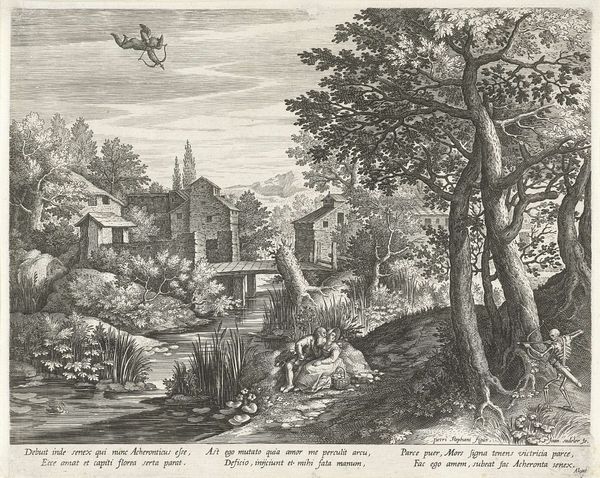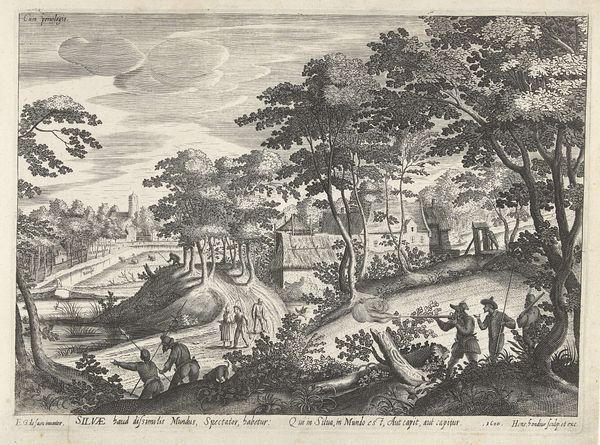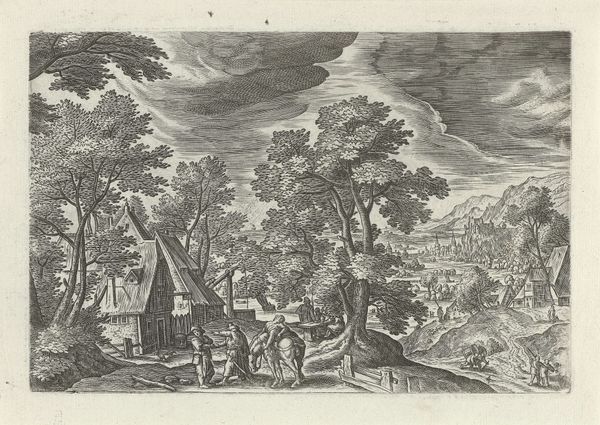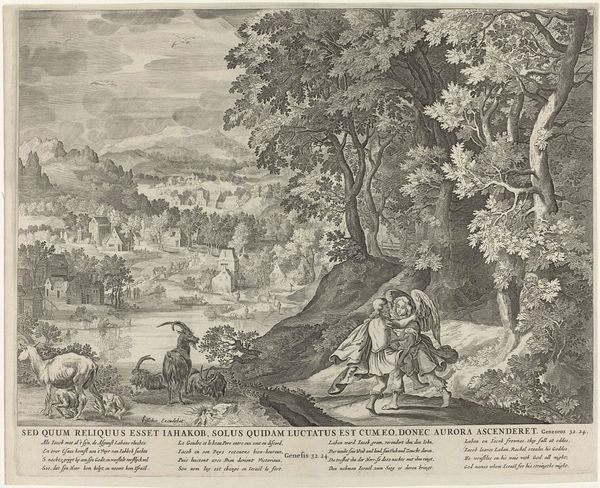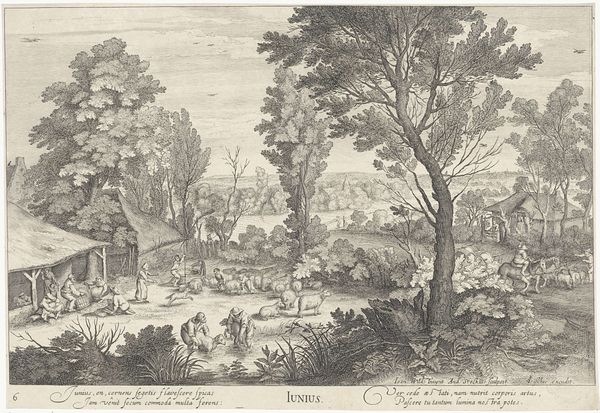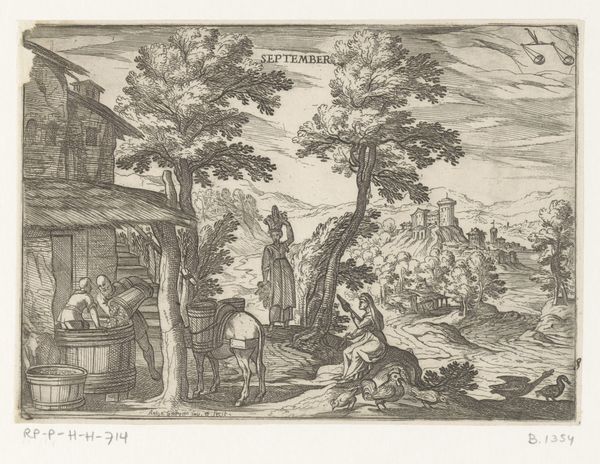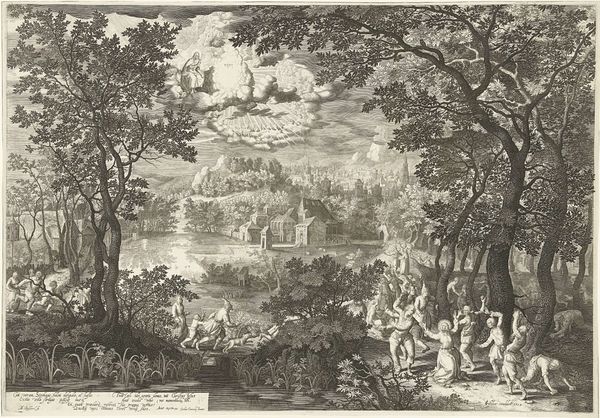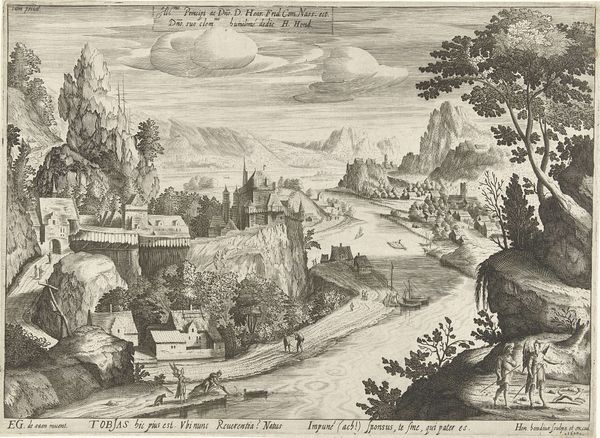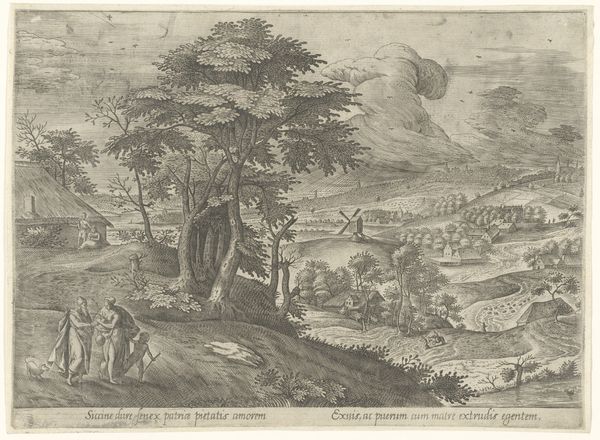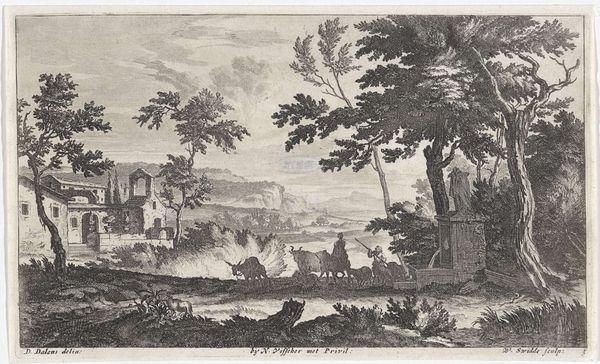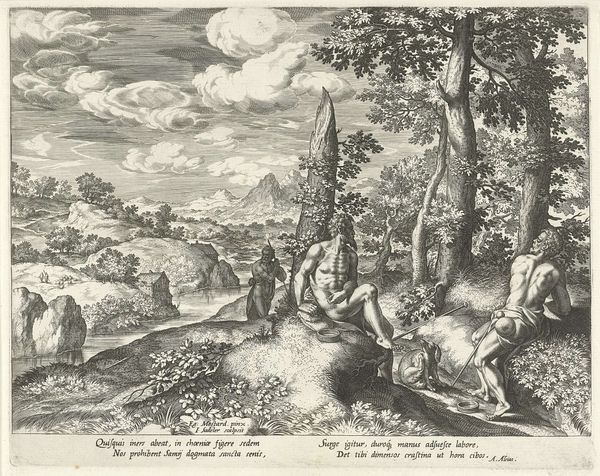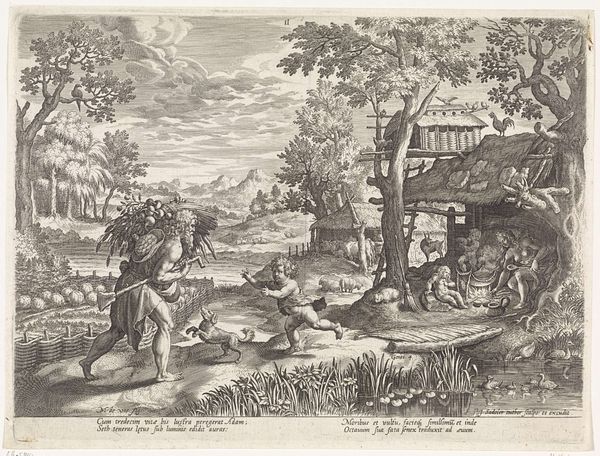
print, engraving
#
baroque
# print
#
old engraving style
#
landscape
#
river
#
figuration
#
history-painting
#
engraving
#
miniature
Dimensions: height 168 mm, width 208 mm
Copyright: Rijks Museum: Open Domain
Editor: This engraving, "Heilige Wolfhardus als kluizenaar," from 1600, by Johann Sadeler I, depicts Saint Wolfhardus as a hermit. The detail is incredible. What particularly strikes me is the contrast between the intricate landscape and the rather rough appearance of the Saint himself. What do you make of it? Curator: It's fascinating to consider this work through a materialist lens. The printmaking process itself—the labor involved in creating those fine lines, the etching, the inking, the pressing—reflects a very specific mode of production. It democratizes the image, making it accessible beyond the elite circles who might commission paintings. Note, too, the use of landscape. Editor: The landscape does seem incredibly detailed, almost like a character itself. Curator: Exactly. Think about the source of the paper. Was it locally produced, or was it part of a larger trade network? How does the relatively small scale of the print impact its consumption? Was it intended for private devotion, or as part of a larger narrative, disseminated widely? And how might the act of collecting and displaying such a print reflect the patron's social standing and engagement with the world? Editor: So, you’re saying we should think about not just what the image represents, but how it was made, distributed, and consumed? Curator: Precisely. It reframes the Saint’s image as not solely about religious devotion, but also about the economic and social forces at play in its creation and reception. What do you think about how prints allowed for wider circulation of imagery? Editor: It definitely makes me think about the artwork less as a unique, precious object and more as a product of its time, shaped by the materials and labor involved in its creation and spread. Curator: Indeed. Looking at the piece this way gives us insight into a broader material culture, not just the artistic skill of the engraver, but also a tangible example of Baroque-era life and industry.
Comments
No comments
Be the first to comment and join the conversation on the ultimate creative platform.
